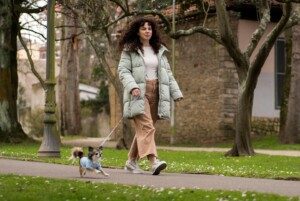
If you’ve been contemplating a treadmill desk to break up hours of sitting, a major international study led by the University of Sydney suggests that walking 7,000 steps a day delivers health benefits nearly on par with hitting the long-touted 10,000 step mark.
Published in The Lancet Public Health (2025), the study was overseen by Professor Melody Ding from the School of Public Health.
If you feel that you’re sitting too much on most days and not walking enough – you’re probably spot-on right.
But sometimes there’s confusion over just how many steps a day will offset prolonged sitting.
The Study: One of the Biggest on Daily Steps
Researchers analyzed data from 57 studies carried out between 2014 and 2025 across more than 10 countries, including the U.S., Australia, the U.K., and Japan.
It’s one of the largest reviews ever conducted on step counts and their link to health outcomes.
Rather than focusing solely on how walking impacts lifespan, this study looked at broader health indicators.
The team examined how daily step counts influenced the likelihood of developing chronic illnesses like type 2 diabetes, cardiovascular disease, cancer, depression and dementia.
The takeaway? While hitting 10,000 steps still has its benefits, the curve of improvement starts to flatten after 7,000 steps.
“For many who work at a desk or struggle to fit in exercise, 7,000 steps is a much more realistic and motivating goal,” said Professor Ding in the paper.
“And even smaller increases — from 2,000 to 4,000 steps — can still produce meaningful health gains.”
Have you been thinking of getting a treadmill desk?

For those thinking about incorporating a treadmill desk into their work routine, this is welcome news.
Aiming for 7,000 steps might not require a massive time investment.
Even walking at a slow pace while answering emails or attending virtual meetings could help you rack up those steps — and more importantly, see real health improvements.
I’ve had a treadmill desk since 2011. Walking at 1 mph at a level incline for an hour requires about 3,000 steps.
Bump it up to 1.5 mph and that’s 4,500 steps per hour.
Now, this applies to me, and certainly, total steps per hour for a given speed will vary depending on one’s height and natural stride.
Nevertheless, you can see how easily you could hit 6,000 steps just using a treadmill desk.
You need not get all 7,000 on the treadmill desk, since you can easily rack up a thousand more steps throughout your day.
Think of a treadmill desk as an adjunct to your daily goal of 7,000 steps.
Study Analysis
The study analyzed participants who used step-tracking devices — like pedometers, accelerometers or fitness trackers — to log their movement.
- People who walked 7,000 steps per day had a 47% lower risk of dying prematurely compared to those who only walked 2,000.
- The risk of dementia dropped by 38% at 7,000 steps, with just a modest 7% more benefit when walking 10,000 steps.
- For type 2 diabetes, risk was reduced by 22% at 10,000 steps and 27% at 12,000.
- The most noticeable gains came when people moved from 2,000 to between 5,000 and 7,000 steps daily.
The paper points out that while 10,000 steps a day is still excellent for those already active, the biggest health shifts happen in that 5,000 to 7,000 range.
A Point You May Not Have Considered
There’s no need to go bonkers about some days ending up getting 9,000 or 10,000 steps because you just read that more than that doesn’t make much difference in longevity or disease prevention.
Instead, look at it this way: There will also be days when you just can’t get near that 7,000.
Perhaps on that day you spent an lot of time driving; maybe you had to make a lengthy one-way trip, then drive back.
There could be any number of reasons why on some days you’ll be lucky to get 2,000 steps.
So if you end up “overdoing it” by getting 5,000 steps on the treadmill desk, but then you ended up walking all over the place after that and got close to 10,000, this “extra-step” day can offset those low-step days.
- The human body was designed for a lot of walking.
- That’s how our ancient ancestors survived.









































